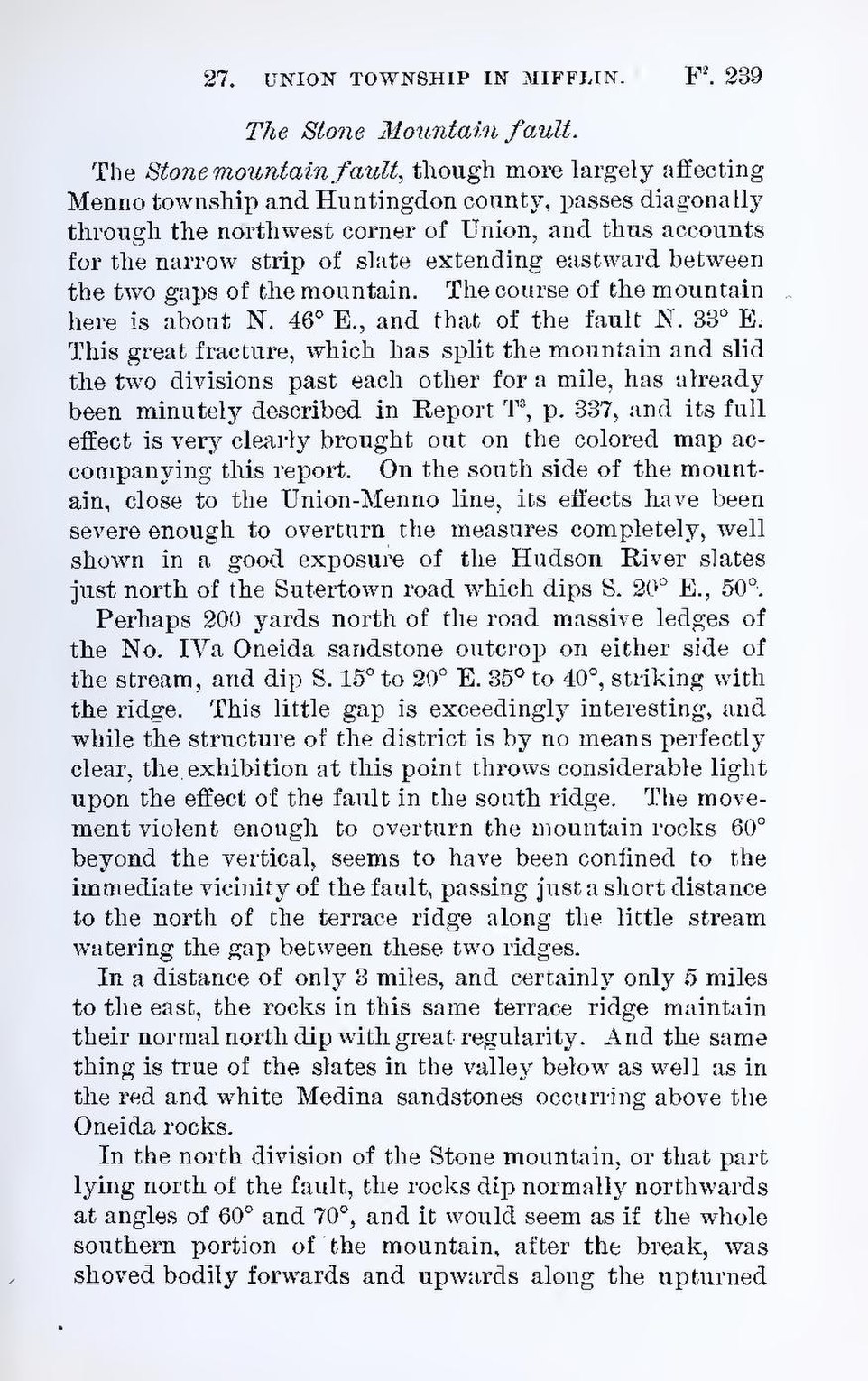The Stone Mountain fault.
The Stone mountain fault, though more largely affecting Menno township and Huntingdon county, passes diagonally through the northwest corner of Union, and thus accounts for the narrow strip of slate extending eastward between the two gaps of the mountain. The course of the mountain here is about N. 46° E., and that of the fault N. 33° E. This great fracture, which has split the mountain and slid the two divisions past each other for a mile, has already been minutely described in Report T³, p. 337, and its full effect is very clearly brought out on the colored map accompanying this report. On the south side of the mountain. close to the Union-Menno line, its effects have been severe enough to overturn the measures completely, well shown in a good exposure of the Hudson River slates just north of the Sutertown road which dips S. 20° E., 50°.
Perhaps 200 yards north of the road massive ledges of the No. IVa Oneida sandstone outcrop on either side of the stream, and dip S. 15° to 20° E. 35° to 40°, striking with the ridge. This little gap is exceedingly interesting, and while the structure of the district is by no means perfectly clear, the exhibition at this point throws considerable light upon the effect of the fault in the south ridge. The movement violent enough to overturn the mountain rocks 60° beyond the vertical, seems to have been confined to the immediate vicinity of the fault, passing just a short distance to the north of the terrace ridge along the little stream watering the gap between these two ridges.
In a distance of only 3 miles, and certainly only 5 miles to the east, the rocks in this same terrace ridge maintain their normal north dip with great regularity. And the same thing is true of the slates in the valley below as well as in the red and white Medina sandstones occurring above the Oneida rocks.
In the north division of the Stone mountain, or that part lying north of the fault, the rocks dip normally northwards at angles of 60° and 70°, and it would seem as if the whole southern portion of the mountain, after the break, was shoved bodily forwards and upwards along the upturned
